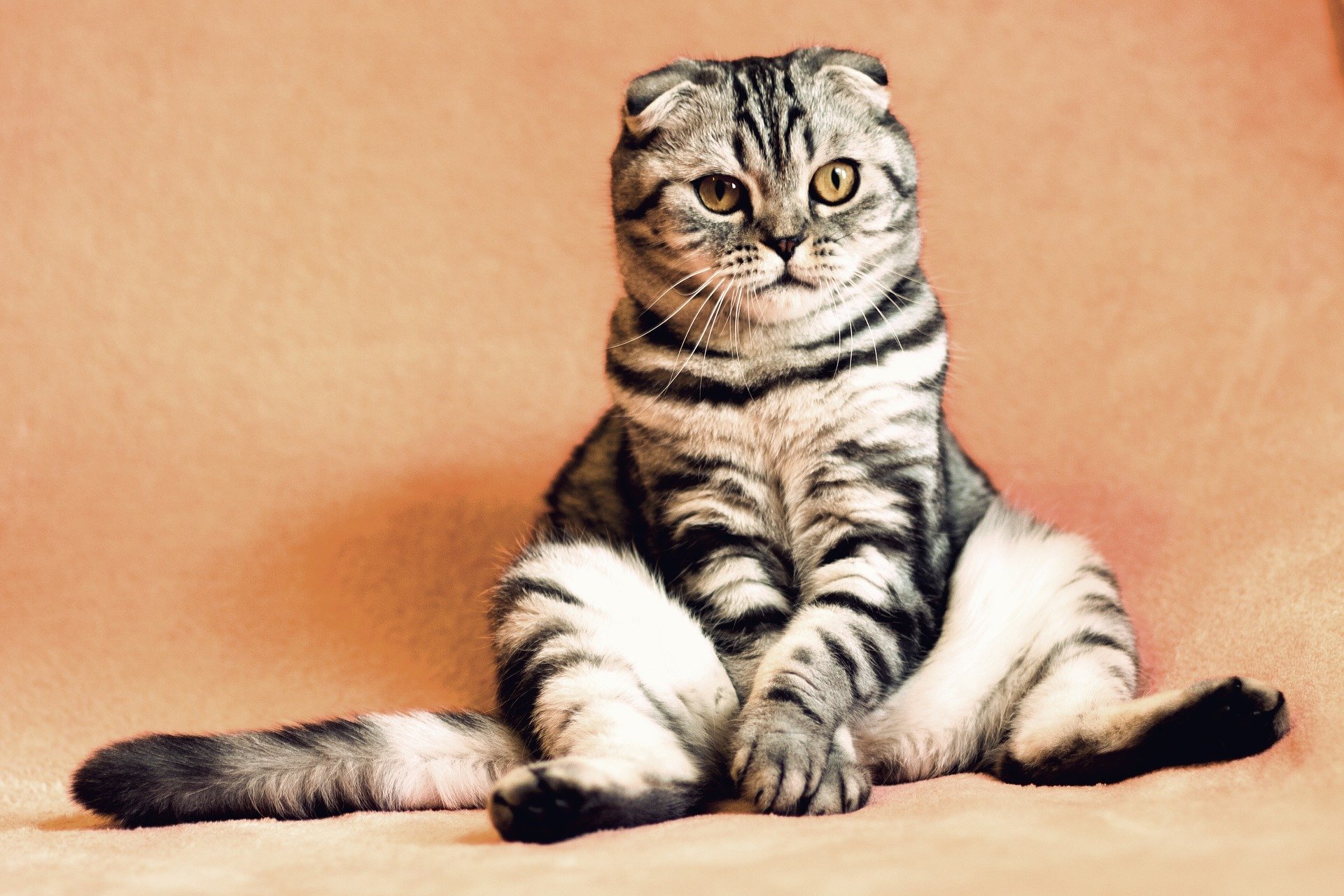Your gorgeous little cat is perhaps independent and enjoys doing things her way. However, as her owner, you have to ensure that she stays healthy. Your cat needs complete nutrition to live a long healthy life. It is, therefore, essential to understand the importance of healthy cat food.
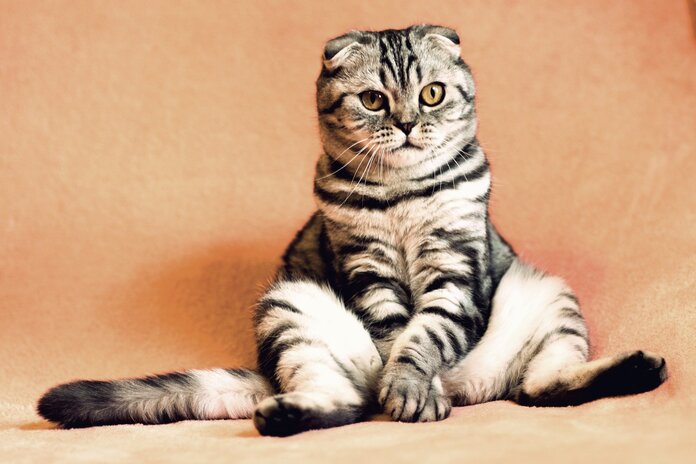
Cats are carnivores, and they depend on nutrients available in animal products. They grew as predators that ingest a high amount of protein, an average volume of fats, and a minimal volume of carbohydrates.
Although cats need a specific volume of each particular nutrient to be healthy, excess of it isn’t good either. This is incredibly true of minerals and vitamins. Therefore the use of supplements usually is not vital if you’re feeding complete and a healthy diet.
Table of Contents
Why It’s Important to Feed Your Cat Healthy Food
Healthy cat food is imperative if you want your cat to have a long quality life. Since our cats can’t tell us how they’re feeling, we must take all the measures possible to ensure that they are healthy.
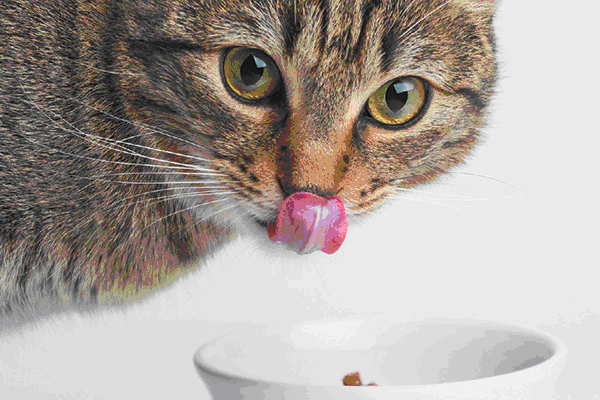
A healthy diet for a cat can consist of dry food, semi-moist food, canned food, as well as some healthy cat treats. All of these contribute to balancing out the diet of a cat. While there are several healthy cat food brands out there, be sure to read the nutritional information carefully right on the label, and consider which brand benefits your cat.
Here are some of the commercial cat food you’ll find in pet stores:
1. Dry Food
Dry cat food is quite cheap because it doesn’t dry out and provides the owners free choice of feeding. It contains between 6 to 10 percent of water depending on the particular formulation and blends of ingredients. However, dry cat food may not be appealing as moist or semi-moist food. It is recommended to reserve dry cat food in a sealed vessel to help avert nutrient degradation and bolster up the taste.
2. Semi-moist Food
Typically, meat and its by-products are the major components of semi-moist foods which contain around thirty-five percent of moisture. Semi-moist food is budget-friendly, and they are more attractive to some cats, unlike dry cat food.
3. Canned Food
Canned cat food usually is a highly-priced kind of food and more mouth-watering for many cats. It has a moisture content of around 75 percent, thus making it an excellent dietary source of water. Canned cat food can stay for an extended period when unopened; however, any remaining pieces of opened canned food need to be refrigerated to maintain the value and prevent spoilage.
4. Healthy Cat Treats
Sometimes giving your cat a treat is not usually unhealthy, only that they don’t have a complete nutritional source and should be fed once in a while. Therefore, treats should not exceed 10 to 15 percent of a cat’s daily caloric intake.
It is, therefore, essential to feed healthy cat food because:
1. Ears
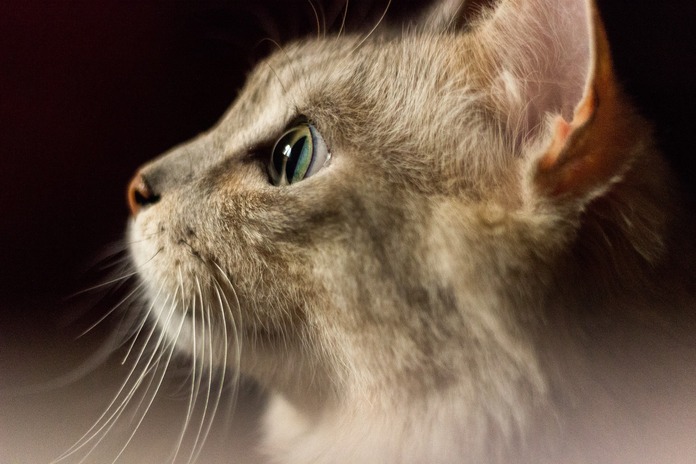
Cat ears are fragile and sensitive, and they should be treated with extra care. You should clean their ears regularly, and there should not be any thick or waxy discharge, or any kind of itchiness, redness, or any unpleasant smell. While feeding your healthy cat food, it’s quite tricky to find your cat with such ear signs. However, if your cat has white-tipped ears or thin hair, consider using sunscreen to prevent sunburns.
2. Better Body Condition
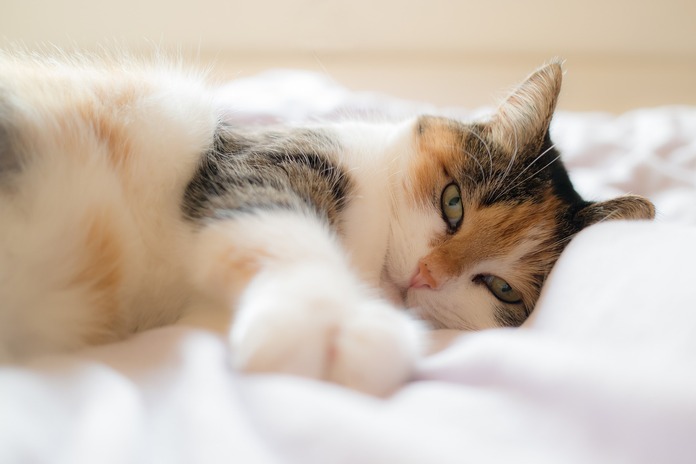
Feeding your cat healthy will contribute to a better body condition. Whereby, you’ll be able to feel your cat ribs not to see. Your cat should have a recognizable waistline and an evident tummy tuck.
3. Bright and Clear Eyes
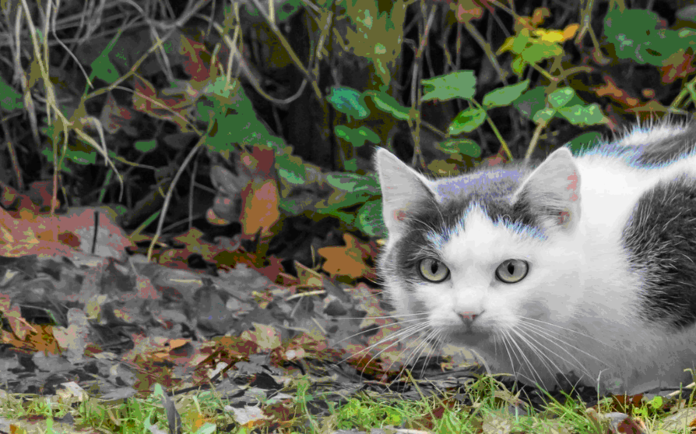
Healthy cats always have clear and bright eyes with no sign of redness, soreness, or runniness. Cloudy pupils or discharge around the eye could be an unhealthy sign, and you should visit your vet as soon as possible.
4. Nose
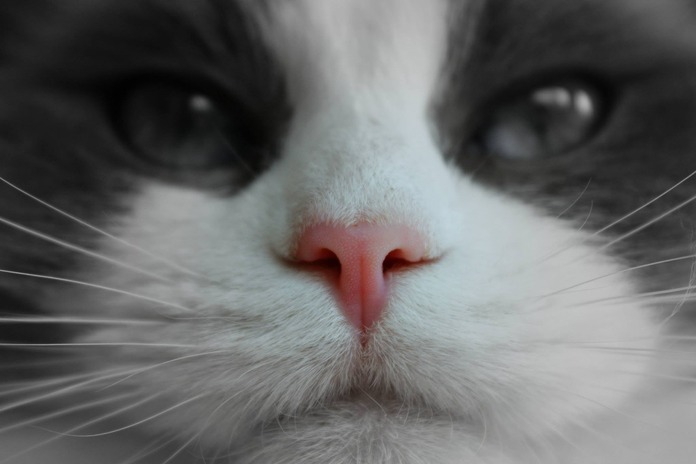
Your cat’s little nose should always be soft as well as slightly damp while touching. Discharge, crusting, bleeding, and a lot of sneezing, are the signs that something is not right; therefore take your cat for a check-up.
How to Tell Bad Cat Food from Healthy Cat Food?
There are different kinds of cat food out there, and it can be overwhelming to choose one of the best cat foods. Fortunately, there are some basic things you can do to decide whether cat food is healthy or harmful. All you need to do is to have the right information to tell the difference while purchasing healthy cat food.
However, your veterinarian is the best resource to help you determine the best cat food. Vets will give you recommendations of best cat food brands as well as the nutritional needs your cat requires. Some cats are fussy and may not like what the veterinarian picks out for them. So it’s crucial to know what to look for in healthy cat food.
Also, read the ingredients label carefully when picking out excellent cat food. Since cat food is not highly regulated by the Food and Drug Administration (FDA) so you cannot always trust labels.
What Makes a Cat Food Bad?
Several components make cat food bad. The primary thing is that cat food is made from cheap ingredients which include the following:
- Animal byproducts: These are leftover parts from industrial meat processing, which can consist of anything from feathers, beaks, and spoiled meat. Such byproducts are grounded up and heat together at high temperatures. While it is an economical manner to bolster protein, it can be hazardous for your cat because it can lead to indigestion or foodborne illness.
- Chemical preservatives: Such as ethoxyquin, BHT, and BTA and propyl galette are economical ways to conserve cat food while, on the other hand, they are very unhealthy. Preservatives are associated with a chronic illness that can cause serious health problems in the long run.
- Fillers: Fillers add volume to the product without providing any nutritional value. Such fillers include cellulose, pulp, and hulls. Fillers are not suitable for your cat’s health since they stimulate allergies.
- Additives: These are flavors and dyes to added sugars and salts that bolster the look and the taste of cat food. These additives may make the food more appealing but have no nutritional value and can be risky to your cat’s health.
What Makes a Cat Food Healthy?
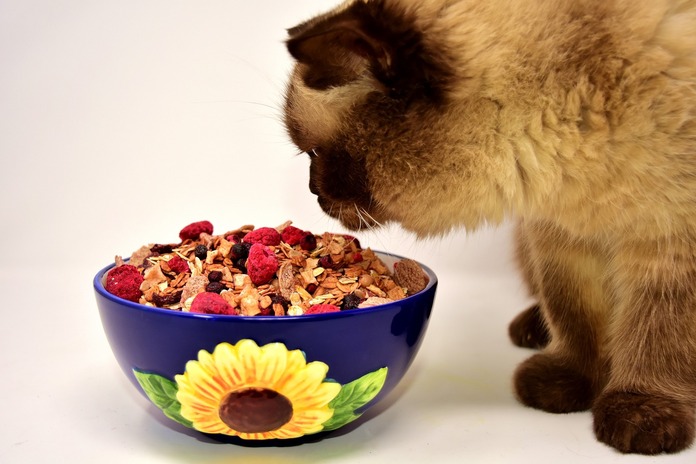
Just like bad cat food, some factors make healthy cat food. Here are some of the first things to look out for in healthy cat food:
- Sufficient source of proteins: Cats need high-quality sources of protein to flourish. The primary ingredient listed on your healthy cat food should be a great source of protein. Despite the meat flavor you decide to go with, some include; beef liver, turkey breast, and deboned chicken.
- Natural whole foods: Natural whole food includes vegetables, meat, fruits, and whole grains. They provide inherent nutritional value, and cats tend to do better digesting whole grains.
- Supplemental nutrition: Healthy cat food has additional nutrients such as added vitamins and essential fatty acids. They are usually the last ingredients listed, and they help support the whole nutrition of your cat.
- Natural preservatives: Natural preservation can come from proper preservation techniques like freeze-drying and air drying, or they can be natural additives like antioxidants, herbs, and potassium salts. These techniques not only reduce your cat’s exposure to toxic chemicals, but they preserve the nutritional content, so the food is more nutritionally dense.
That being said, you need to monitor your cat’s behavior. By doing this, you can quickly tell the difference between lousy cat food and healthy cat food. If your cat has good energy, has a great mood, shiny skin coat, and a healthy weight, this means you’re feeding healthy cat food. On the other hand, if your cat has a dull coat, not in a great mood, overweight or underweight, and lethargic, probably you’re feeding lousy cat food.
Signs Your Cat’s Diet Need to Change
When it comes to choosing the best cat food, it can be an overwhelming task. With several varieties of cat food brand in the market, perhaps you’re asking yourself
What Age Should I Change My Cats Food?
There are three crucial life stages in a cat, especially when it comes to nutrition. The very first stage is the kitten life stage, which is also called the growth stage. This is where healthy cat food rated with growth is needed. During this period, kittens need food with higher levels of proteins and calories.
The second stage is the adult life whereby dietary changes begin, and you should consult your veterinarian. The third life stage is the senior life stage. During this stage, nutritional changes are essential.
There are signs which you, as a cat owner, must look out for when it comes to changed behavior. Read on to understand when your cat’s diet needs to change.
Signs It’s Time to Change My Cat’s Food
Besides seeking advice from your veterinarian about nutrition as your cat undergoes different stages in life, it is crucial to keep an eye for certain signs that are required in your cat’s diet. Here are the top 6 popular signs you want to be wary of:
1. Lethargy/Weakness
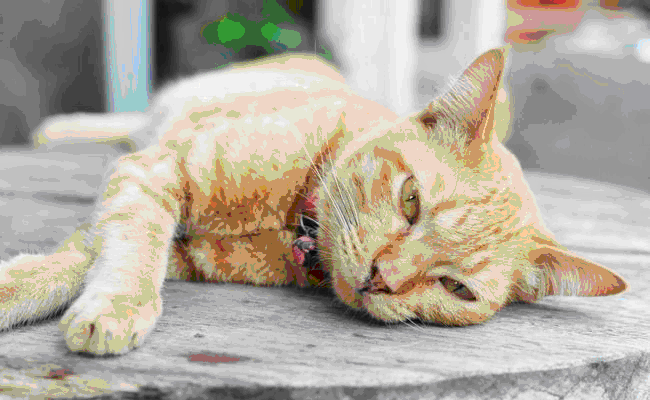
In a situation whereby your cat had lately gone through a surgery, frustrating event, or illness, he may be a little exhausted. So diets with a high volume of antioxidants can help stimulate the immune response. Thus speeding up your cat recovery, and getting them back in their feet as soon as possible. Keep in mind that a veterinarian should examine cat acting lethargic or weak before deciding any changes on a diet.
2. Dry, Dull Coat
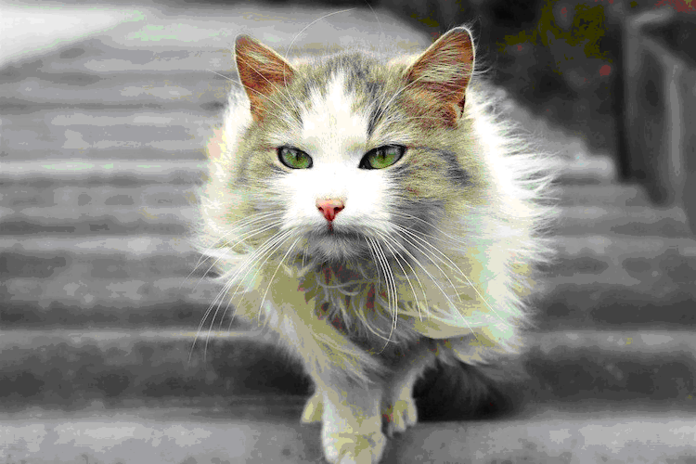
While diets with necessary fatty acids are primary ingredients in maintaining your cat’s skin healthy, it also keeps its coat in excellent shape. Although many foods are processed with skin and coat advancement in mind, it is essential to look for a cat diet with omega-3 and omega-6 fatty acids to keep your cat’s coat glossy and shiny as soon as possible.
3. Itchiness
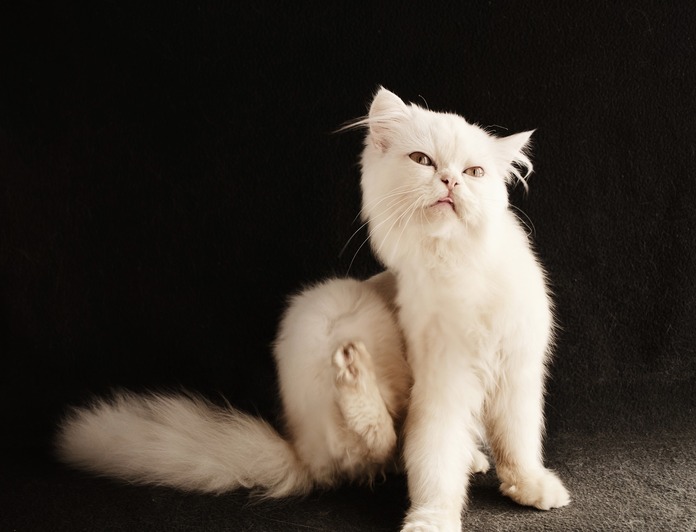
Allergies are more prevalent in pets, and the primary reason for this is the cat food they consume. If you observe your cat itching and scratching, perhaps the kind of food consumed is probably the cause. While there are low-allergen diets, allergic cats will benefit thus, reduced the volume of potential allergens exposed to them. Your veterinarian, however, has a perfect solution for allergic pets, and you need to consult before changing any diet. Some cats may be allergic to some foods so, find out if yours is one of them. If they do, you can begin doing away with ingredients they’re allergic to and offer them a diet that will leave the comfortable all along.
4. Upset Stomach
One of the most evident signs that your cat’s food is not compatible with their body is stomach upset. This includes persistent diarrhea or vomiting, and your veterinarian should check since there are several causes, and don’t be shocked if it turns out you’re feeding the wrong cat food. Some cats are more reactive to ingredients than others, so you might have to consult your veterinarian to ascertain which components are causing tummy upset.
5. ‘Senioritis’/Age
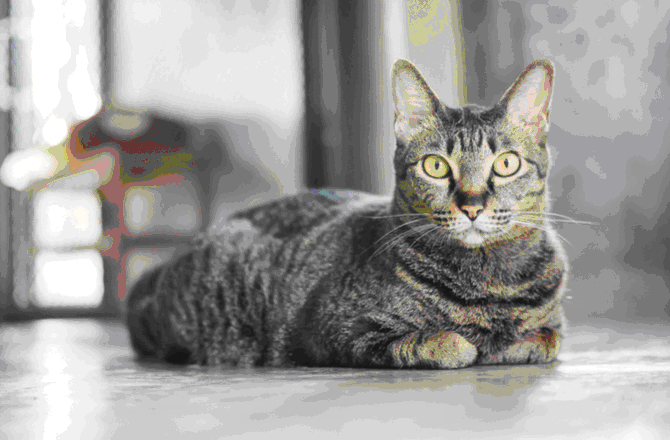
The age of your pet determines whether a diet needs to be changed. As your cat grows, the nutrition requirements vary as well. For example, senior cat food is lower in calories, but higher in fiber and generally has additives distinct to this life stage.
6. Unhealthy weight
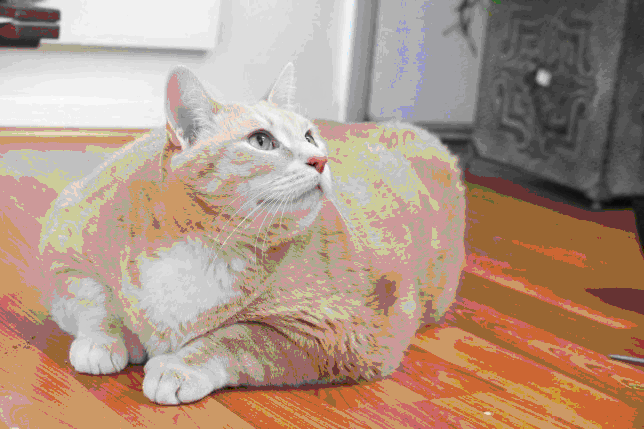
Many cats are becoming obese due to feeding the wrong food or overfeeding. It’s recommended to change the diet. While feeding less of the right food is best, a diet mainly meant for weight loss will ensure that they still have a complete volume of the required nutrients, vitamins, and minerals while consuming fewer calories.
The most significant way to ensure that your cat has a healthy lifestyle is by choosing the correct diet. But if you think your cat might benefit from switching nutrition, consult your veterinarian for healthy cat food and healthy life.
Healthy Kitten Food
We all love kittens; they are adorable, innocent, and lovable. For this reason, we should offer our kittens the best kitten food so that they can live a healthy life. Feeding your kitten with the best kitten food brands lays an excellent foundation for the kitten to grow healthy free of diseases.
How to Choose the Best Kitten Food?
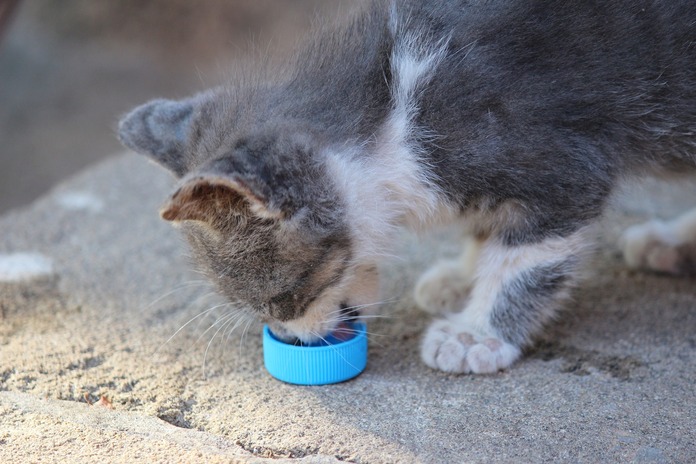
It’s quite thrilling having a new kitten in the house, but it can be overwhelming while choosing kitten food in pet stores. One of the initial decisions you’ll need to make is choosing a suitable diet for your kitten.
When looking for the right kitten food, you must choose a diet that will meet the needs of your growing cat. For a kitten’s suitable growth and development, she needs more protein, fat, vitamins, and minerals to live a happy, healthy life. The extra protein is required for strengthening muscles and supporting tissue; fat is necessary for fatty acids, as a carrier for fat-soluble vitamins, and the extra calories for energy. Minerals, of course, are required for the buildout of healthy teeth and bones.
As you begin to search for kitten food, you’ll need to decide if you want to feed dry cat food, wet cat food, or both. The rule of thumb is to feed a wet food that is low in carbohydrates and high in proteins. Since cats are obligate carnivores, they need animal protein to survive and thrive. Kittens also need moisture in their diets to keep them well hydrated. Excess carbohydrates and less moisture in kitten food may lead to serious health problems.
Starting your kitten off with the most favorable diet is a great way to get ahead of health issues. Wet cat food is highly recommended for your cat’s health and longevity. While less suitable and quite costly than dry food, you’ll find it’s worth the hype.
However, some owners prefer dry kitten food because they are convenient and can be purchased in large volumes and stored for weeks. If you decide to go for this, choosing high-quality kitten food with the most top protein diet is essential.
Here are some of the things worthy of consideration when choosing kitten food:
Choose Kitten Food Brands Wisely
You should always consider buying kitten food from a reputable brand. As some brands might sell harmful products that could affect your kitten’s health.
Kitten Food Must be a Balanced Diet
Please make sure your kitten diet should have a balance of real proteins, minerals, carbohydrates, vitamins, and fats and oils. This ensures uniform growth of your pet, as well as no excess amount of the food, is fed to your furry friend.
Check Kitten Food Ingredients
The ingredients in your kitten’s food are essential to the growth of your kitten. For example, a kitten nervous system and brain are dependent on necessary fatty acids DHA. Kittens’ diet should have higher levels of DHA to help in the development of the brain, eyes, and ears.
Consider the Number of Calories
Kitten food should have higher amounts of calories, unlike adult cat food. This helps to repay the amount of energy kittens spend while growing. The amount of food they consume must provide sufficient nutrients to aid in development.
Qualities of Healthy Kitten Food
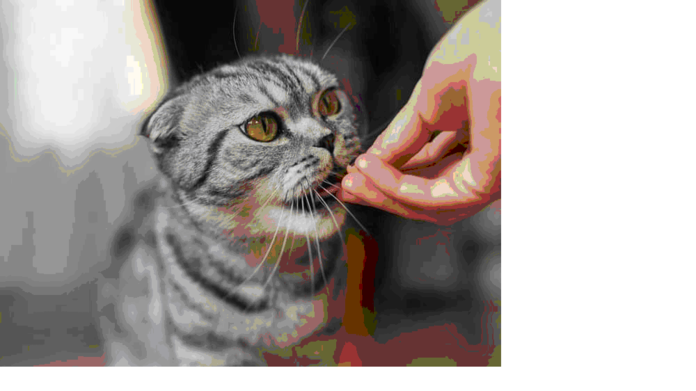
There are certain features that are worthy of consideration when deciding the type of kitten food to purchase. They include:
- Your kitten food should not have any controversial elements such as dyes and preservatives, which can affect the health of your kitten.
- Kitten food requires an adequate amount of moisture.
- Should offer a considerable amount of proteins.
- Kitten food should not have grains as the dental formula of your kitten has not developed yet, and these grains could hurt the jaws of your pet.
- Healthy kitten food should be purchased from reputable brands.
Advantages of Feeding Your Kitten Healthy Kitten Food
- Active and playful kitten. The carbohydrates present in kitten food provide enough energy, thus keeping your kitten active and playful throughout.
- Food acts like a toothbrush as it scrubs off remains, therefore, reduces dental diseases.
- Since kitten food contains all the nutrient portions needed to keep the kitten healthy, this reduces common health diseases.
- Your kitten’s potential to lead a healthier and happier future increases day by day.
Healthy Grownup/Adult Cat Food
Congratulations, that adorable cat you’ve raised is now an adult. Once your cat has turned one year, this is a wake-up call to think about consistent cat feeding. As they transition from a playful kitten to a grown-up adult cat, it is essential to ensure that they have complete nutrients required to stay a happy, healthy life.
How Much Should I Feed My Cat?
If you’re a new or first-time pet parent, this question is bound to come up. Well, this might seem a simple one, but there are many answers to this question as there are cats. There are several schools of thought when it comes to how much you should feed a cat. First things, first. Your veterinarian is the best source to answer this question.
However, we have a guideline of the factors to consider on how much should you feed a cat:
1. Cat’s Age
Adult cats don’t require frequent feeding like kittens. Therefore, free-feeding is an alternative, while a mealtime approach can work well if you feed your cat twice a day. Considering your cat’s age, it can guide you on how much you should supply a cat.
2. Cat’s Activity Level
For a house cat who loves to sleep on the couch the whole day, free-feeding will not work because your cat will be feeding out of boredom, not hunger. This can easily lead to obesity. While for an active adult cat, puzzle toys that encourage your cat to work for her food can let you allow constant access to food.
3. Type of Food
Depending on the type of food you offer to your adult cat that is dry food, wet food, and canned food, you can quickly tell how much you should feed your cat.
While precise numbers of calories needed by cats vary, a good rule of thumb to keep in mind is that an adult cat needs around 30 calories per pound of body weight. Let’s say; your cat is 7 pounds. You can assume she needs roughly 210 calories per day to maintain the right weight.
How Often Should I Feed My Cat?
Several first-time cat owners frequently ask this question, but how and when you feed your cat will depend on your schedule and lifestyle. Here are some of the popular feeding methods that will help you monitor your cat’s food intake.
1. Free Feeding
Just as the name suggests, this is the method where food is readily available for your adult cat. However, as a pet owner, you need to know the amount of food your cat consumes per day to avoid overeating or health problems. Free feeding is excellent for dry food, which doesn’t smell the house out and doesn’t spoil quickly.
2. Time-Restricted Feeding
This is a super fantastic method if you’re looking to change from free-feeding to time-restricted or portion feeding. It’s favorable if you’re not comfortable to leave cat food down all day. All you need to do is put a part of the cat’s daily allowance and leave it down for a certain amount of time between 10 and 30 minutes.
3. Portion Restricted Feeding
This is when a set amount of food is put down at set times throughout the day. This method is ideal for cats that are on an eating plan for weight loss and medical conditions such as diabetes. It is also suitable for cats whose nutritional intake needs to be managed.
4. Feeding Toys
While there are greedy cats, feeding toys or puzzle toys will help to slow down the food intake. It’s a perfect method if your cat is on a weight management program.
That being said, it is essential to keep an eye on how your cat is eating whichever method you select. If you weigh the right amount of food to consume per day, you’ll be able to keep an accurate eye on this.
Should I Feed My Cat Wet or Dry Food?
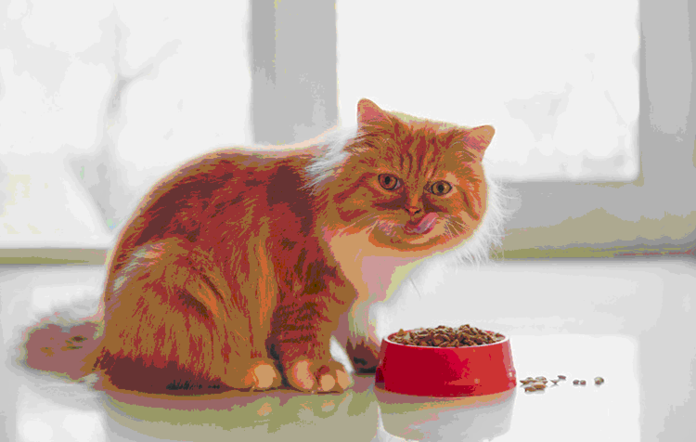
You are deliberating whether to give your cat wet food or dry food? Like other animals, your furry friend needs a balanced diet that contains all the required nutrients, including proteins, vitamins and minerals, fatty acids, carbohydrates, and water. The choice of feeding wet or dry food or even both depends on your preference.
While some pet owners insist on wet food, others swear by dry food, both of them offer all the nutrients your cat needs for a healthy life.
Is Wet Food Diet Better For Your Pet?
With wet food, cats incline to eat much in one sitting instead of going back and forth for more. While wet food has a high level of moisture content, cats will drink less. Always serve wet cat food at room temperature to ensure that the aroma and taste are mouthwatering. It’s recommended not to keep wet food open for so long as it will get spoiled and may tummy upsets.
Benefits of Wet Cat Food
- It has a high moisture content that will keep cats hydrated, thus reducing health problems such as urinary-tract problems.
- It is appealing to picky eaters
- Wet cat food promotes a lean body mass. It has high levels of proteins that aid in strengthening muscles. It also helps keep the mass weight of the cat through adulthood into a senior cat’s life.
- Wet food is completely digestible, and it contains all the essential nutrients for a healthy cat.
Dry Cat Food: Is It Better For Your Cat?
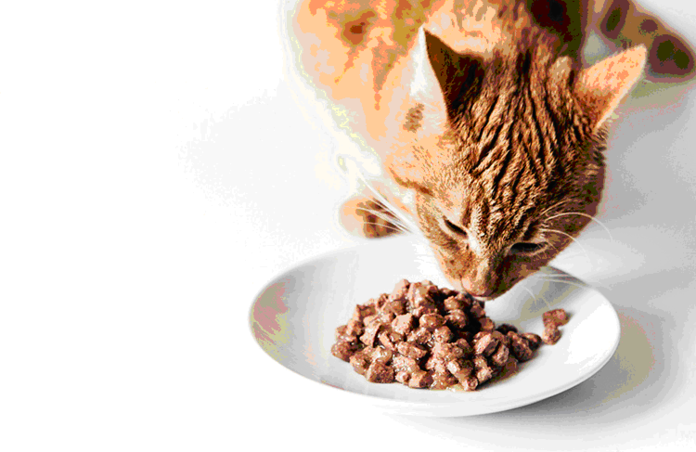
Dry food is convenient if you free feed your cat. The food stays natural all day so it can be left outside, so the cat eats whenever he wants. With dry food, you can contemplate your cat to chew it more active and take longer to it. Also, they drink more water and frequently go back to the food instead of eating all at once.
Benefits of Dry Cat Food
- Suitable
- Easier to store
- Easy to weigh and use
- Dry food can stay longer once opened unlike wet food
Mixing Dry and Wet Cat Food
When given a choice, several cats tend to prefer a mixture of both wet and dry foods compared to dry or wet only. Wet food is shown to increase enjoyment and add variety to a diet because of the full range of textures. On the other hand, dry food satisfies a cat’s natural desire to snack many small meals throughout the day.
Importance of Raw Meat in a Cat’s Diet
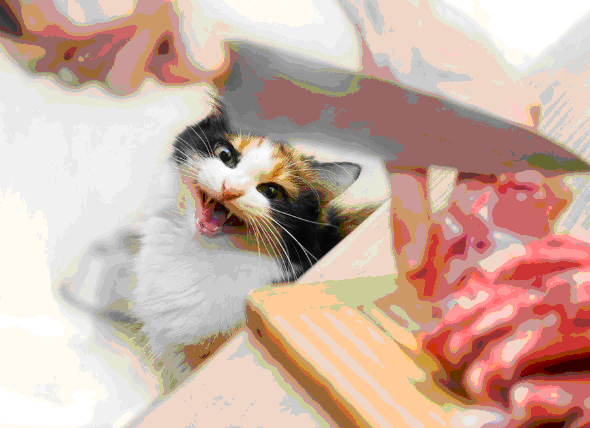
Cats are carnivorous animals. They love eating a prey-based diet as well as raw food. Cooking often degrades the value of rich nutrients present in meat, causing the loss of minerals, vitamins, and amino acids. Meat that is used in highly-processed cat food is usually cooked at high temperatures. Nutrients are then added as supplements.
Should Cats Have a Raw Food Diet?

Cats can be fed a raw food diet, and some veterinarians advocate that cat owners should adopt this as part of their cat’s lifestyle. This is because cats are strictly carnivores, and they depend on meat for their development and growth.
Providing your pet with a balanced diet that is based on what your pet should eat in the wild has several benefits:
1. Healthy Silkier Coat
In less than a month or two of feeding a raw cat food diet, you’ll notice your cat’s skin has reduced shedding, fewer hairballs, and has gotten softer and silkier. Cats need omega-3, omega-6, and unsaturated fatty acids in their diets, which must come from animal products. These essential fatty acids contribute to a healthy coat.
2. Increased Energy
You’ll notice how much energetic your cats have become after switching to raw cat food. Cats have uniquely adapted to the use of proteins for their energy requirements. Through a process called gluconeogenesis, cat’s burn, turning them into energy in the liver. The burn rate for cats is ordinarily high, with their required need for high-quality protein from various meat sources.
3. Better Digestion
While cats are naturally carnivores, they should eat meat often. Also, their digestive systems are designed particularly for meat-based diets. A cat’s gastrointestinal tract is acidic and quite short and digests species-appropriate raw food really fast in less than 12 hours. This gives the bacteria very little time to proliferate, thus your furry friend is naturally resistant to food poisoning.
4. Improved Dental Health
Generally, cats who consume raw meat have no periodontal diseases because they chew raw bones, connective tissue, and meat, which keep their teeth clean. Offering raw meat to cats will help to keep all the dental diseases away.
5. Considerably Reduced Stool Odor
When your pets are fed the appropriate diet, their bodies make use of most of the food, thus less stool production. Their stools are brittle and hard to smell. However, if you feed your cat a diet with high amounts of carbohydrates, their digestive system will strain to digest excess carbs. This leads to a sizeable smelly volume of stool, which is not normal.
6. Improved Urinary Health
Raw cat food diet is considered to have high amounts of moisture, which leads to no urinary tract inflammations. This is because they get enough moisture in the food.
7. Natural Weight Control
If your cat is overweight, they will probably begin losing weight on raw cat food. Cats will often overeat when fed with an improper diet to make up for nutritional deficiencies in food. Typically, they won’t overeat when they are fed the right food with appropriate nutrients.
Types of Homemade Cat Food
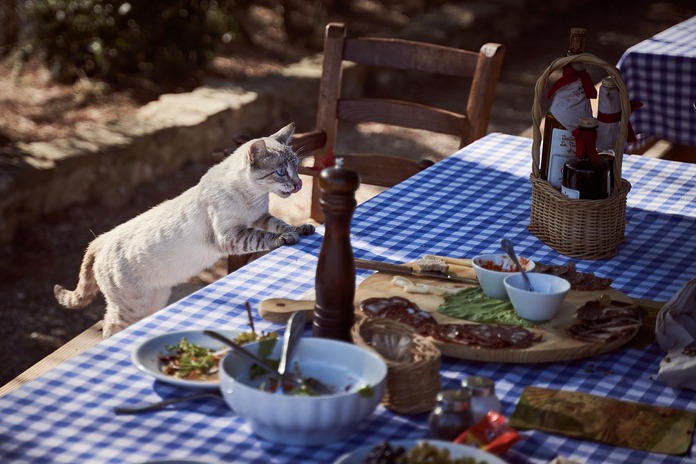
There are different kinds of homemade cat food they include; raw cat food, half-cooked cat food, and cooked cat food.
Raw Cat Food
Feeding your cat a raw diet is the most balanced diet you could ever give to your pet unless your cat has specific health issues. A raw free-feeding can consist of anything fresh, including meat and vegetables. However, vegetables are not recommended because the cat’s digestive system is meant to digest meat. So they’ll struggle to digest plant-based products.
When your cat is on a raw diet, you’ll notice a lot of changes. The coat’s appearance will be much silkier and softer. They will have improved energy as well.
Although some people tend to believe that raw cat food is expensive, in reality, it is way cheaper than buying commercial cat food. I don’t mean you stop feeding commercial food, but each of them has its benefits.
Half-Cooked Cat Food
A half-cooked diet is done by just cooking the surface of the food. This is ideal for cats who don’t like raw food and require somewhat of a push, yet they have raw parts underneath.
Since the meat is semi-cooked and it can quickly get bacterial spoilage, it’s a homemade cat food that a lot of owners who dread the risks of having the food spoiled decide to go with.
Cooked Cat Food
Giving your feline a cooked food is actually what it sounds like: a diet that is made out of cooked foods. This implies that you can either cook the meats properly and leave the other components raw, or cook everything together to have the entire portion fully cooked.
Like the previous types of homemade cat food, they bring similar advantages. The cooked food, however, removes the possibility of salmonella poisoning and bacteria spoilage altogether because the meat has been adequately prepared.
Healthy Homemade Recipes For Cats
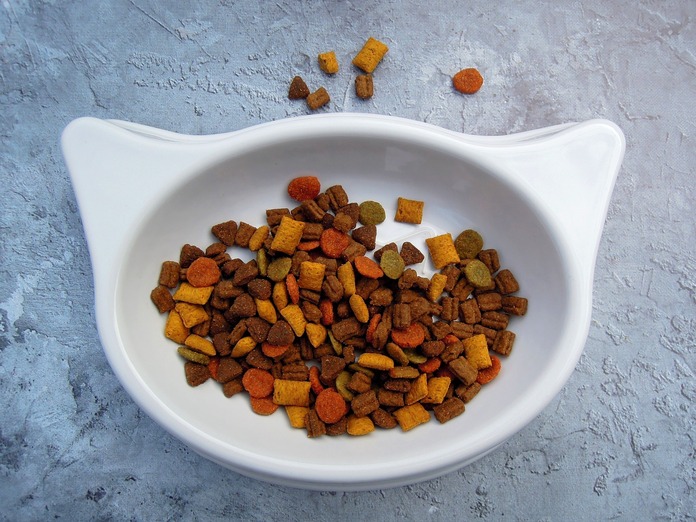
Perhaps you’ve had a hard time finding the perfect cat food for your pet. Not to mention how much you might feel denounced when you find that costly cat food that marketed itself as being ideal for a healthy cat is good for nothing.
Ever thought of being a feline chef? If you love your furry friend, you’ll do anything for her. The best part is that you don’t have to be a connoisseur chef to prepare cat food. All you need is around 30 minutes depending on the cat food you’re cooking. Furthermore, homemade cat food is way cheaper than commercial cat food in the market.
For beginners, you’re bound to ask this question, ‘why should I make my homemade cat food? You’ll get answers for this as you read on. You’ll always know what is in your cat’s food because you’re the one cooking.
While cats are just like humans, they do like variety in diets. Cooking different cat foods every few days is way better than having the same meal every day. Don’t be surprised to turn their noses up at it out of boredom.
The Vital Nutrients in a Cat’s Diet
- Animal Protein. While cats are obligate carnivores, they need meat in their diet to survive. You’ll find some cat foods in pet stores touted ‘high protein’ only to realize they are protein sources such as nuts, lentils, and soy. Cat’s digestive system is meant to digest animal proteins. It’s hard for them to digest proteins from plants.
- Vitamins. Your cat needs vitamins from food sources. They change beta-carotene from plant sources into vitamin A. Therefore, it should come from an animal source such as halibut, kidneys, and liver. Beef liver, tuna, mackerel, and salmon are excellent sources of vitamin D. For a healthy cat coat, vitamin E is essential, which is readily available in eggs. While vitamin B can be obtained in liver, red meat, brown rice, and poultry fish, this is vital for the cat’s well-being.
- Calcium and phosphorus. Calcium and phosphorus are essential in a cat’s diet to enhance strong bones and teeth. Phosphorus helps to boost the reparation of cells as well as metabolization of proteins. On the other hand, calcium assists muscles and aid in the blood clots. Such nutrients can be found in small fishes like sardines.
Cat Food Recipes
Sardine Cat Food Recipe:
Cats love the aroma and flavor of sardines. This is an easy homemade cat food recipe you should try.
Ingredients
- 1 tin sardines in oil
- ⅓ cup cooked oatmeal
- 2 tablespoons of mashed cooked carrot
Directions
- Mix all the ingredients in a bowl
- Pulp ingredients together
- Serve
- Store the remaining in the refrigerator and dispose of after 3 days
Mackerel Recipe:
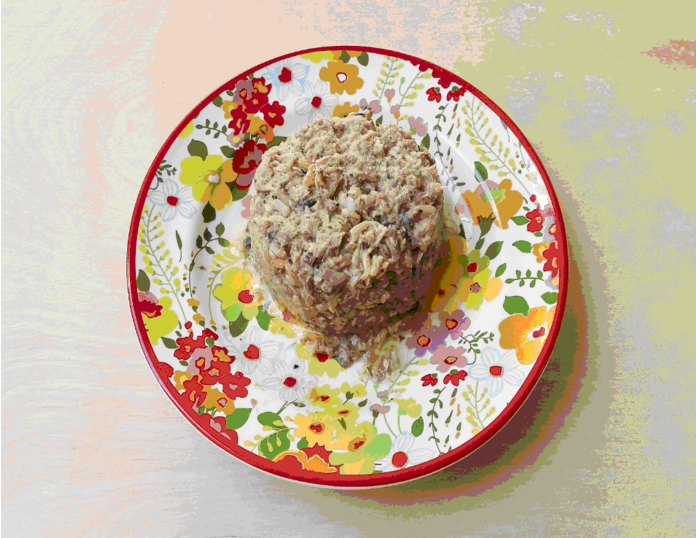
Ingredients
- a cup of canned mackerel
- 1 tablespoon of organic cooked rice
- 1 tablespoon of sunflower seed oil
- 2 tablespoons of beef or chicken broth or water
Directions
- Mix all ingredients in a food processor
- Stir until fully mixed
- Serve
- Refrigerate remains and dispose of after 3 days
Trout Dinner:
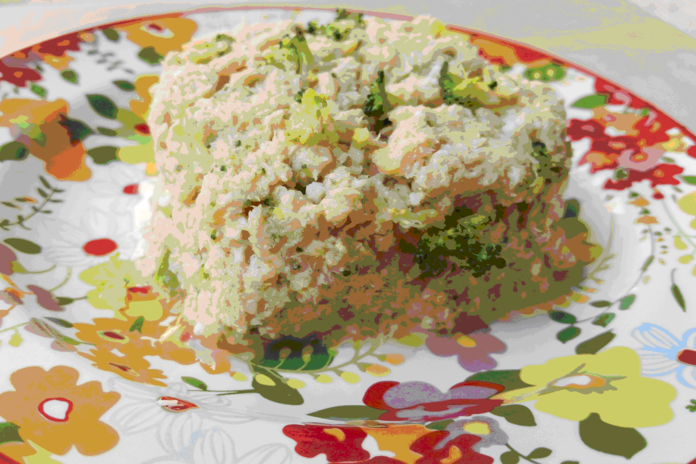
When your cat deserves a tasty treat, don’t hesitate to try out this recipe.
Ingredients
- one cup full of cooked trout
- 1 cooked egg yolk
- 1 tablespoon of chopped steamed broccoli
- 2 tablespoons sunflower oil
Directions
- Mix all ingredients in a food processor
- Puree until mixed
- Serve
- Store leftovers in the refrigerator up to three days
Salmon Dinner:
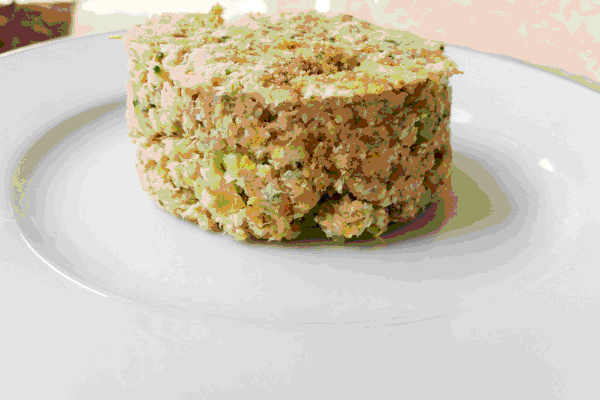
Salmon is an excellent source of healthy fish oil, and it’s finger-licking. This recipe might be one of your cat’s favorites.
Ingredients
- 1 tin salmon
- 1 tablespoon mashed cooked broccoli
- ¼ cup of whole wheat bread crumbs
- 1 teaspoon brewer’s yeast
Directions
- Mix all ingredients in a bowl
- Blend
- Serve
- Store any remains refrigerated and dispose of after 3 days
Kitty Breakfast:
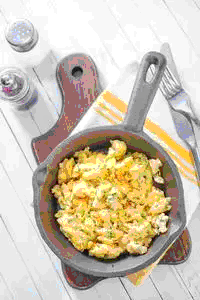
Ingredients
- 1 tablespoon nonfat dry milk
- 3 eggs
- 3 tablespoons cottage cheese
- 2 tablespoons of grated vegetables
Directions
- Blend milk powder with a small amount of water
- Add eggs and stir until well blended
- Pour the blend into a small non-stick frying pan and cook over medium-low heat until ready.
- Flip and spread cottage cheese and grated vegetables over half of the cooking surface.
- Let it cool and cut into small pieces and serve.
Fish Balls Deluxe Recipe:
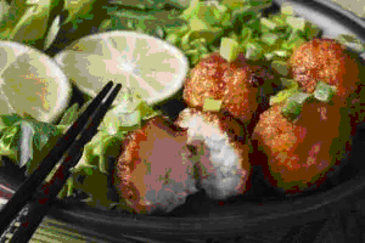
Ingredients
- Small tin of tuna in olive oil
- 1 beaten egg
- 2 tablespoons of bread crumbs
- 2-3 tablespoons of ground cheese
Directions
- Preheat your oven to 350 F
- Pulp all the ingredients to an even paste
- Now shape into small balls and put them in a greased baking tray
- Bake for 20-25 minutes while checking regularly. When the fish balls are golden brown, they are ready.
- Cool perfectly before serving
Raw Chicken Cat Food:
Ingredients
- 4.5 pounds of chicken thighs with bone
- 400 grams of raw chicken heart
- 4 egg yolks
- 2 cups of water
- 2 grams of taurine
- 200 grams of raw chicken liver
- 200mg vitamin B additive
- 200 IU vitamin E
- 1 ½ teaspoon of lite iodized salt
Directions
- Remove and dispose of 50% of the skin and 20% of the bones.
- Chop the thighs into small pieces.
- Crush the remaining thigh meat, bones, hearts, and liver. Whisk until well mixed.
- Mix all vitamin supplements, well-beaten eggs, and salt in a large bowl. Add 2 cups of water.
- You’ll have 3 significant concoctions; minced meat, ground meat/bone, and additives whisked with eggs. Blend and stir all ingredients thoroughly.
- The remains must be stored in a sealed vessel that lets room for expansion as the food freezes.
How to Make Homemade Cat Food That is Safe For Your Pet
Do you like having control over your cat’s diet? Great! It doesn’t just happen overnight. It’s simple with crucial steps to follow. Homemade cat food can have a myriad of benefits. It helps cats with sensitive stomachs as it evades allergens, and helps to get rid of processed ingredients. It also encourages timed feeding instead of free-feeding, which can benefit cats’ digestion and weight management.
Homemade cat food will save you a lot of bucks. While pre-made raw diets are much more convenient than any other prepared diet, they are so expensive than homemade. Here are some great tips you need to know to make homemade cat food that is safe for your cat.
1. Cats are Obligate Carnivores
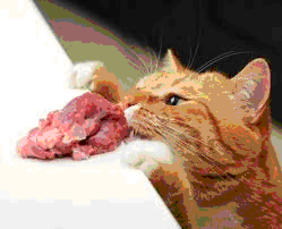
They evolved as predators; thus, their digestive tracts are meant to digest meat, not veggies and carbohydrates. A raw meat diet is the only thing that cats are evolved to eat.
2. Don’t Dispose of Bones
Think about your cat in the wild. He would pursue and eat the prey together with the bones. Therefore, always give your cat meat chunks and raw meaty bones. Bones are meant to aid in boosting mental and dental health. With all the gnawing and chewing, using the side teeth is what makes the teeth stronger.
3. Cats Need Added Vitamins
Cats need specific vitamins and minerals, which help in maintaining proper health including taurine, and vitamin A. Commercial cat food comes typically with these nutrients mixed in, but for homemade cat food, you need to add them yourself to evade health problems such as heart diseases and blindness.
4. Get the Right Supplies
If you want to make homemade cat food that is safe for your cat, it is necessary to get the right equipment, including a meat grinder, stainless steel mixing bowls, knife, kitchen scale, storage containers.
5. Handle raw ingredients Safely
The way meat is processed, it can easily carry pathogens that can make us sick. This means safe handling is vital. It is always recommended to wear gloves to reduce contamination. Carefully wash the preparation area, cooking tools, hands, serving dishes, and hands with hot soapy water.
6. Consult Your Veterinarian When Changing Diets
Always consult your veterinarian before changing your cat’s diet, especially if your cat is still a kitten or has health issues that need special nutrients. While some people recommend homemade cat food, it cannot work for everyone. Your cat may be allergic to a new diet or have unique nutritional needs.
7. Know the Risk of Raw Diets
Vets are against raw and homemade diets for the cat’s health safety. They advise against natural food diets because of the risk of transmitting pathogens. However, veterinarians also caution that dry or prepared cat food can also carry bacteria that can make us sick. Always practice safe handling and hygiene, whenever handling food for you or your pet.
Why Homemade Cat Food?
There’s just something exceptional about homemade cat food that even the deluxe restaurants can’t copy. Nothing is compared to the mouth-watering flavor of personal cooking. Cats should be valued as well, not offering them leftovers from your plate. It’s a lot easy-peasy than you think and you can make tasty cat food for your furry friend.
Here are many real benefits of homemade cat food:
1. Essential Natural Vitamins and Minerals
Homemade cat food tends to have more nutrients needed in a cat’s diet, unlike commercial cat food, which loses nutrients during processing. While cats evolved as predators, they have pointy, sharp teeth that are meant for piercing the meat. Processed cat food doesn’t provide such health benefits.
2. Fresher and Healthier Food
Since you’re cooking the cat food yourself, there is no need to worry about contamination that may lead to poisoning or other health problems. You can also choose to offer a variety of cat food to your pet every day without compromising the health of your cat.
3. More Affordable
Homemade cat food recipes are way more affordable than commercial cat food out there. Since the cat food recipes are homemade, you can choose to purchase the least expensive ingredients or purchase in bulk to save more bucks. Furthermore, in some cases, you don’t have to buy ingredients every time but use whatever is available in your kitchen.
4. Easier to Control
Even though you’re sourcing all the ingredients and being a feline chef, you’ll have full control over your cat’s diet. This is a fantastic duty for the pet owner.
Other benefits of homemade cooked cat food recipes are:
- Improved digestive system
- Fewer hairballs and shedding
- Increased energy levels
- Better urinary and dental health
How Do You Feed Your Cat?
Let us know how you feed your cat.

